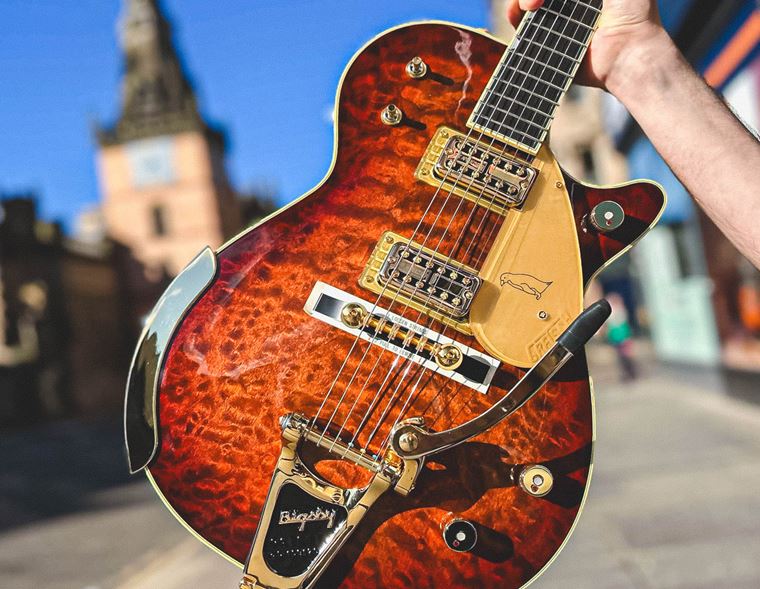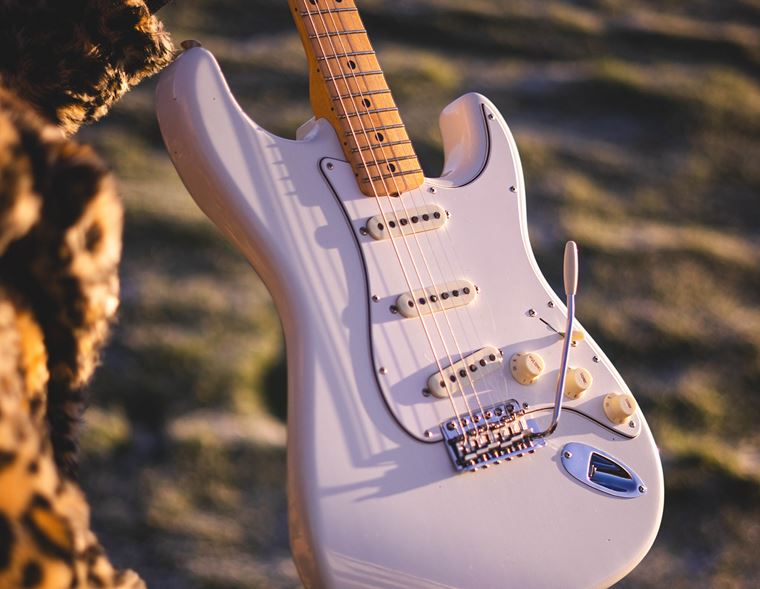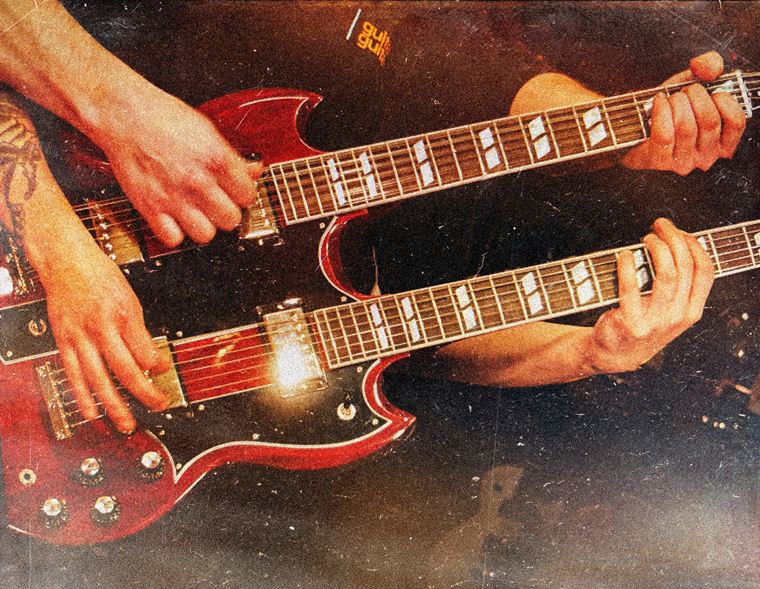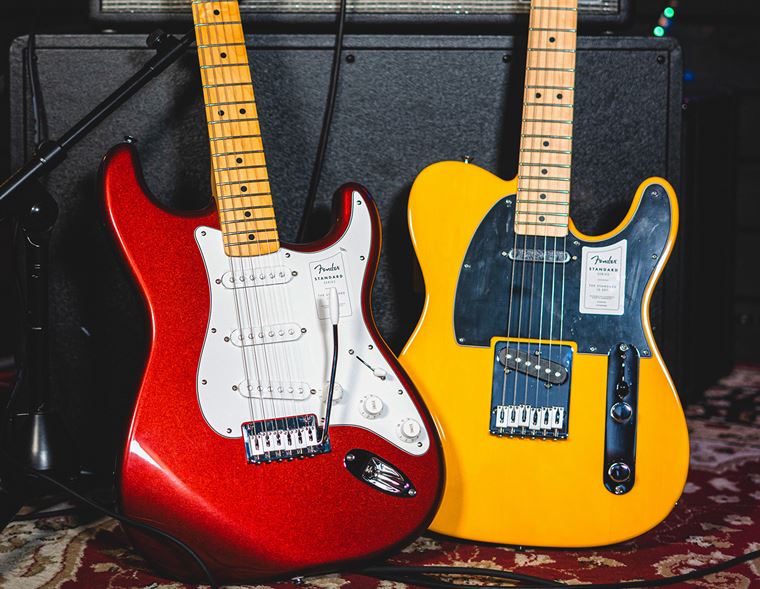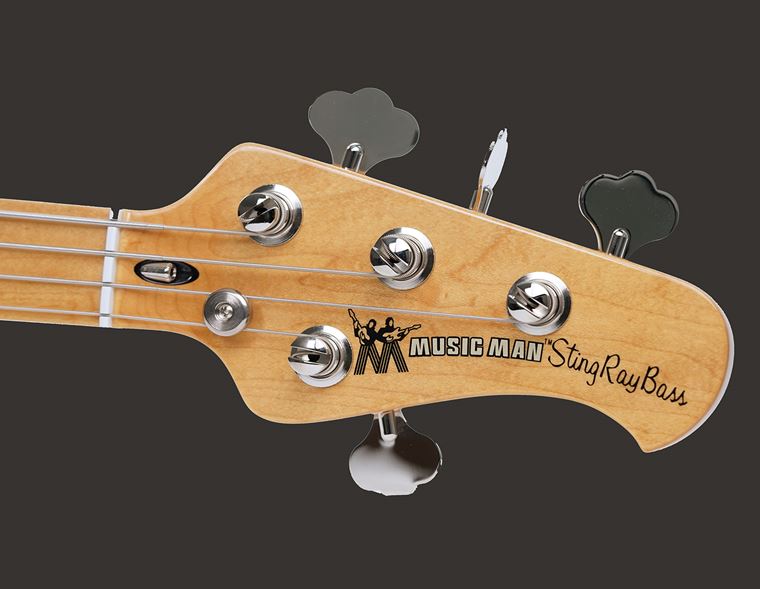Acoustic Amps: Our Expert Guide
Published on 03 April 2024
Amps for acoustic guitars? But they work without amps!
Indeed they do, but we’re living in a different world now, folks. From open mic nights to small gigs, every public performance with acoustic guitars is now accompanied by a (usually blonde or brown) amplifier. Even buskers have long since understood that more volume is required these days to cut through the ambience of a busy weekend high street!
So, there will be occasions when you need to amplify your acoustic guitar, and your standard electric guitar amps will not do the job: they simply aren’t designed to!
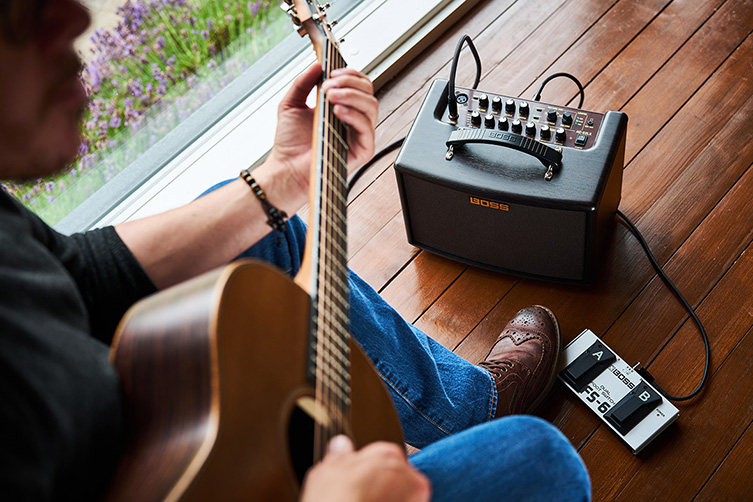
Dedicated acoustic amplifiers are designed to faithfully recreate and project the sound of your acoustic, without (hopefully) colouring the sound too overtly. Where an electric guitar amp does its job by altering and colouring the sound of your guitar (your Strat doesn’t sound like a snarling Marshall until it is plugged into a snarling Marshall, if you get me), a successful acoustic amp does its job by doing the exact opposite and remaining as transparent and neutral-sounding as possible.
But what to buy? There are a great many beige, brown and even black acoustic amps out there in the market: which is right for you? That is what I shall explore with you today. I’ll look into different situations that require acoustic amps, and even what type of acoustic guitar you’ll need. Are you ready?
Contents
How to Amplify an Acoustic Guitar
Acoustic Guitars That Plug Into Amps
Busking: Roland Street Cube EX
Great All-Rounder: BOSS Acoustic Singer Live
Professional Choice: AER Compact 60 Mk4
How to Amplify an Acoustic Guitar
If you want to amplify your acoustic guitar, you first of all need a guitar that has a pickup fitted to it, then you need an acoustic guitar amplifier to plug it into. I’ll take these two subjects separately, but in essence, that’s it!
Acoustic guitars, though fundamentally different in their design and workings, still function and operate in the same way as electric guitars, as far as the player is concerned. You connect your guitar to the amp via a standard ¼” jack cable, and the sound is ‘picked up’ via the guitar’s pickup and sent to the amp. Many acoustic amps have mic inputs too, but we’ll get to that!
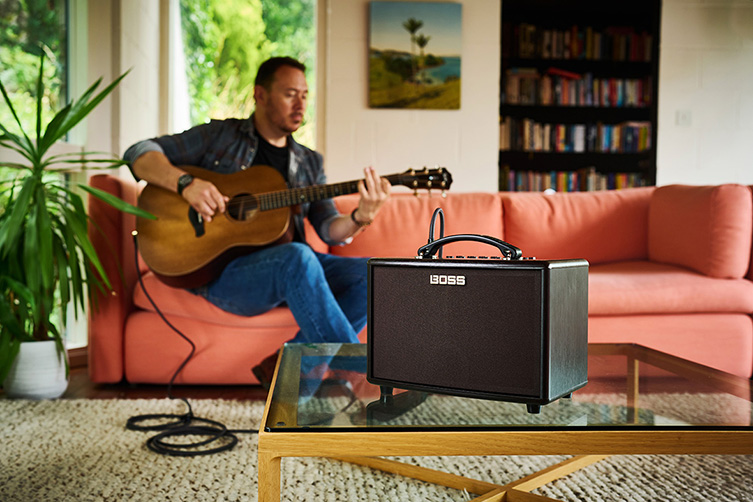
Acoustic Guitars That Plug Into Amps
Not all acoustic guitars can work in this fashion, of course. What you need is an acoustic guitar with a pickup system, referred to in the industry as an ‘electro acoustic’. In every other way apart from the pickup system, these are entirely normal acoustic guitars and can be used unplugged, just like any acoustic guitar.
You can often identify an electro acoustic by searching for a control panel on it. Lots of electro acoustics have these, and they either sit just inside the soundhole or they’re fixed into the side of the body. These contain your volume control, and often tone, tuner and EQ controls, if the model has such features.

Electro acoustic guitars generally require battery power in order to function. These can be 9v PP3 batteries (the rectangular ones) or a few AA or AAA varieties. The battery compartment can be found in a number of places, from in the control panel itself to a separate little compartment near the input jack, to even inside the soundhole. It just depends on the type of pickup system.
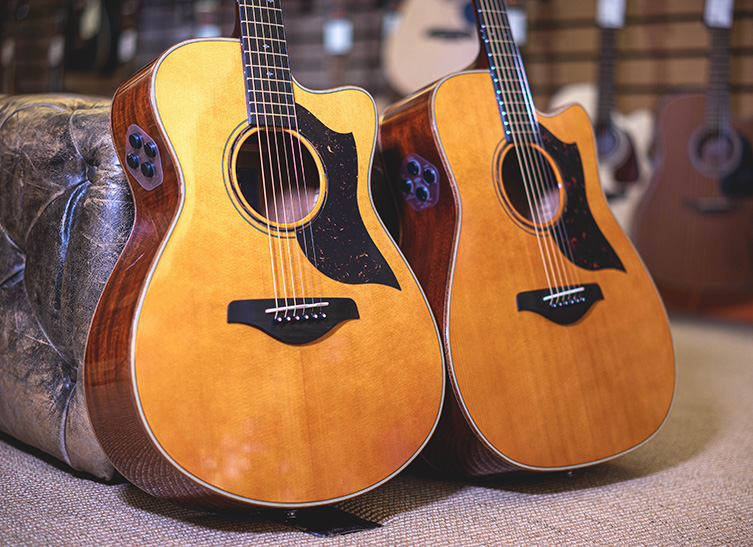
Electro acoustics are often built with a cutaway in the body. This is an area in the upper bout of the body that’s shaped away to allow your fretting hand easier access to the upper frets. I can’t really say why so many manufacturers add a cutaway to their electro models, but it’s a fashion that’s existed as long as I’ve played a guitar.
You’ll often note a ‘CE’ suffix to a model name: this denotes ‘cutaway electro’. For example, a Taylor 114e is a non-cutaway electro acoustic guitar, while the Taylor 114ce is the same electro model but with a cutaway!
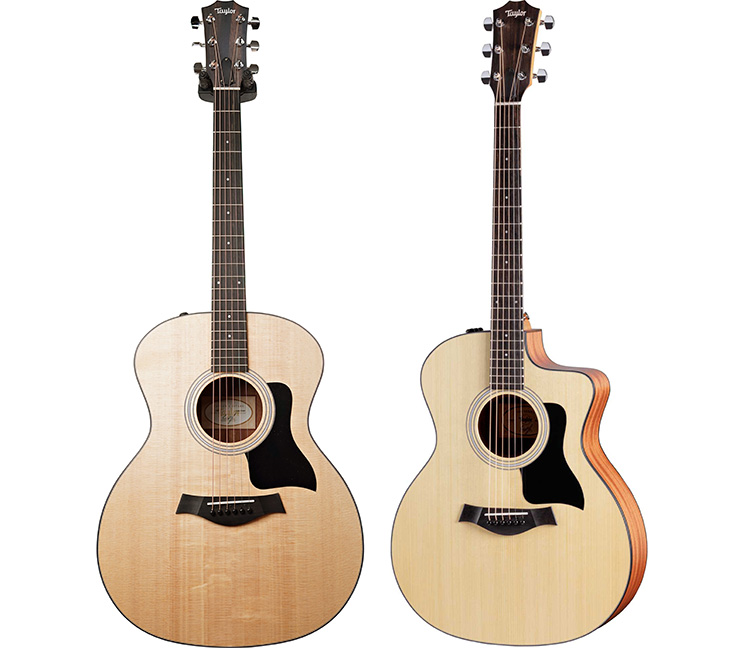
Choosing an electro acoustic guitar is obviously a bigger subject than this blog’s scope, but suffice to say that you need some form of acoustic pickup if you want to plug into an amp. If you have an acoustic guitar that you love, and it doesn’t have a pickup, worry not! You can have a pickup system fitted as an aftermarket modification. Companies like Fishman and LR Baggs offer some amazing units, and many of them are ‘reversible’ modifications in the sense that they don’t require any drastic chopping and drilling to fit. If you decide that you don’t need the pickup, it can be removed without leaving your guitar disfigured!
Choosing an Acoustic Amp
Let’s talk about amps then! As with electric guitar amps, acoustic amplifiers are available in a wide range of sizes and shapes. Buy according to your needs, but it’s worth thinking ahead and future-proofing yourself: a small amp may be suitable for your life right now, but if you have ambitions towards larger performances, would it make more sense to invest in a larger amp now? It might make more sense in the long run.
Other things to consider are weight, features and battery power. Let me address these in the context of different musical situations…
Busking: Roland Cube Street EX
If you plan on busking, the main things you need in an amp are light weight and battery power. You might have other needs, like loopers or effects onboard, but those first two points are the most significant.
Roland have an amp that’s custom made for the job. You’ve probably seen it on high streets up and down the country, and that’s because the Roland Cube Street EX is the one that buskers swear by!
This amp has two channels, and interestingly, both channels can handle instruments or vocals! One of those channels contains amp models (you might be using an electric guitar) and has more effects, whilst the other channel is set up more obviously for vocals or other instruments. Still, both will do both! Not every acoustic amp offers this, so do bear that in mind.
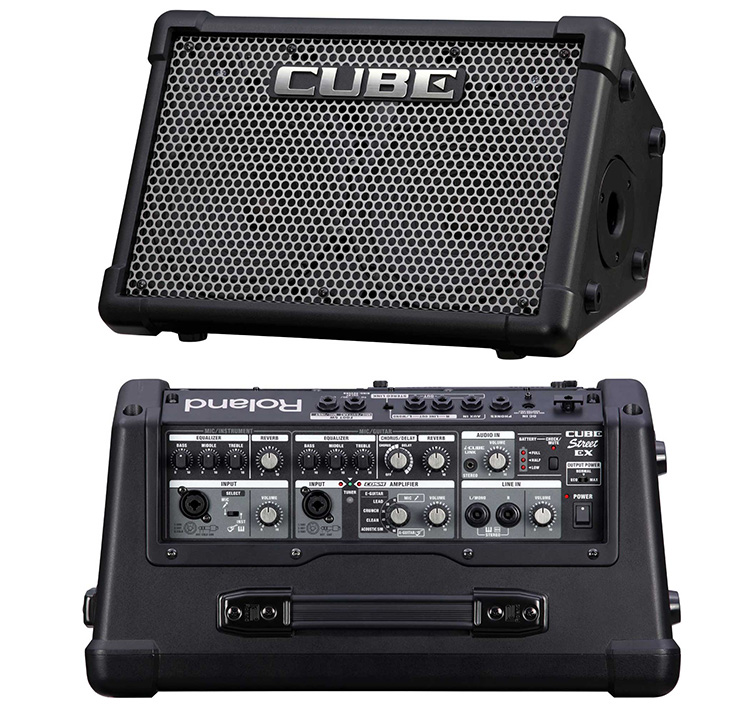
The Street Cube EX is wedge-shaped for better aiming your sounds at the weekend shoppers, and there’s enough power (50 watts, with dual tweeters and woofers) to allow plenty of volume and projection.
Best of all, it’s very light and runs on either direct current (a mains adaptor is included) or batteries. These can be generic AA or rechargeable, so you’re never stuck for power! This amp delivers a huge bang for the buck, and it’s clear that the designers have listened to the needs of performing musicians and delivered what they need. It does more than just acoustic guitar (it’ll happily handle electric guitars and keyboards), but acoustics sound good for sure.
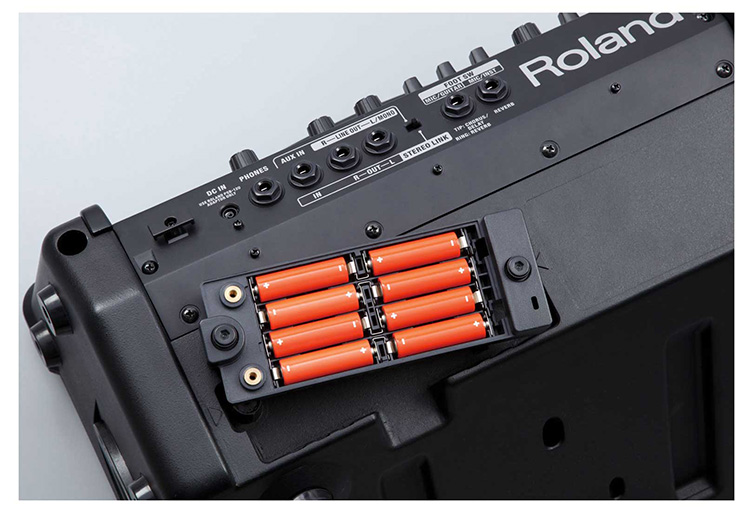
Great All-Rounder: BOSS Acoustic Singer Live
Here’s a great all-rounder for the acoustic guitarist who wants a quality sound for both guitar and vocals, with enough power to be useful but also a relatively compact unit.
BOSS are famously innovative, and this BOSS ACS Live amp packs in the features and performance, particularly given the reasonable spend involved. It’s a 60 watt combo, but the bi-amped design (separate woofer and tweeter for low and high frequencies) allows for a sonic spread that’s bigger than the amp’s size might suggest.
There are dedicated channels for both guitar and microphone: the guitar channel has chorus and reverb, whilst the mic channel has reverb and echo-delay. The mic channel even has phantom power, in case you want to use a condenser microphone!
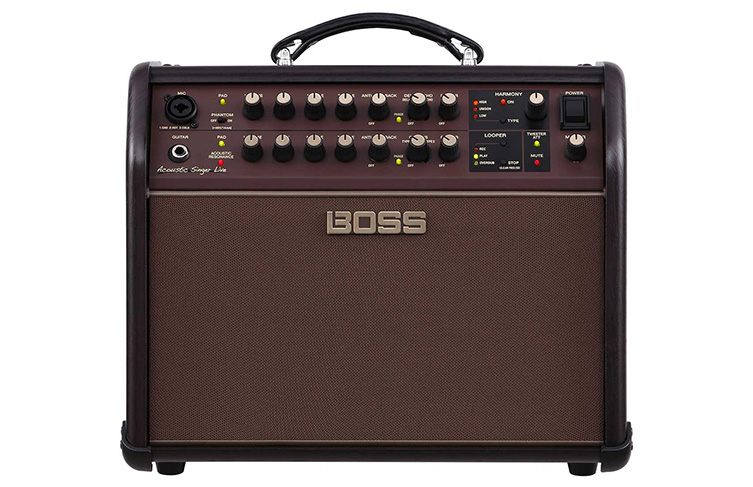
There’s a built-in looper, a USB output for recording, and, impressively, a Harmony function on the mic channel! Backing vocalist built-in? I’ll take that!
BOSS quality is built-in too (their amps and pedals are famously robust), and I’d say that this is the one to beat for most gigging players who don’t need battery power.
Professional Choice: AER Compact 60 Mk4
For the highest fidelity and the most transparent tone available in a reasonably-sized amplifier, no one has yet been able to beat AER. Known as ‘the acoustic people’, their high quality amps adorn nearly as many acoustic performance spaces as the Cube Street, despite being over double the price. This is because they sound great, frankly, and the Compact 60 is the most useful model for most players.
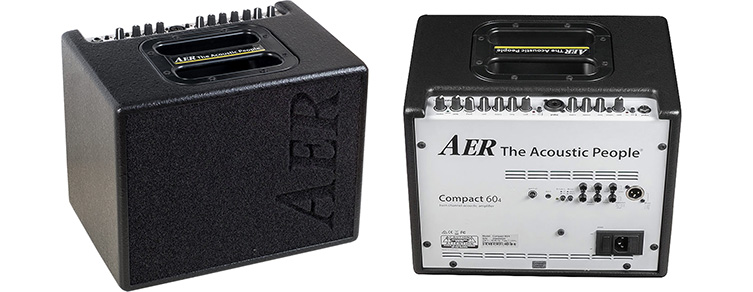
Why? It’s a great size for one thing: big enough to sound large and punchy, but small and light enough to be easy to cart around. It’s a two channel amp with simple but effective controls and built-in effects (reverb, delay and chorus), offering up an experience that’s all about great tone. Indeed, vocals sound great through this amp too, but it's the clean, clear and powerful reproduction of the acoustic guitar tone that keeps performers coming back to AER year after year. You just can’t argue with quality!
Other Good choices
Those three are my personal recommendations, but there are now loads of great acoustic amps out there, so I’ll highlight a couple more to add to your shortlist:
Fishman Loudbox PRO-LBT-600: loads of controls and also Bluetooth power from the pickup masters, who obviously also know a thing or two about amp design. This 160 watt combo gets a solid thumbs up from me.
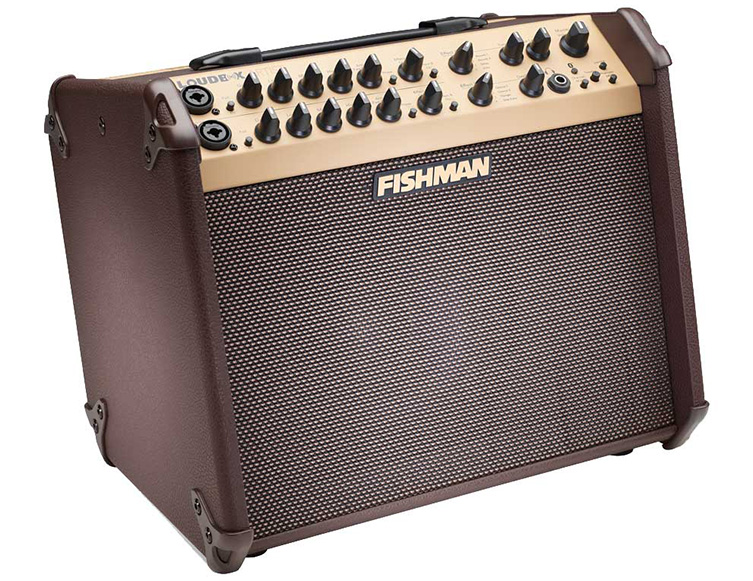
Blackstar Sonnet 120: Blackstar obviously make kick-ass electric amps, but their Sonnet range of acoustic combos are well worth a look, too. Two combo (mic or instrument) channels feature here, and notable extras include an anti-feedback feature. Well considered and solid.

It’s All About the Songs
When it’s time to get your music out there, there’s nothing more satisfying than grabbing your acoustic guitar and going preaching! Whether you plan on spreading the word of rock out on the streets or inside a venue, I hope that this guide has helped steer you towards a suitable acoustic amplifier. There are loads out there to try out, but the ones on here today are all examples of amps that I’ve had good times with. I can recommend them all, but factor in how you plan to use yours before choosing and you’ll get the one that best suits you.
Once you’ve got your amp sorted, get out there and play your songs! Good luck!
Browse our Selection of Acoustic Amplifiers




